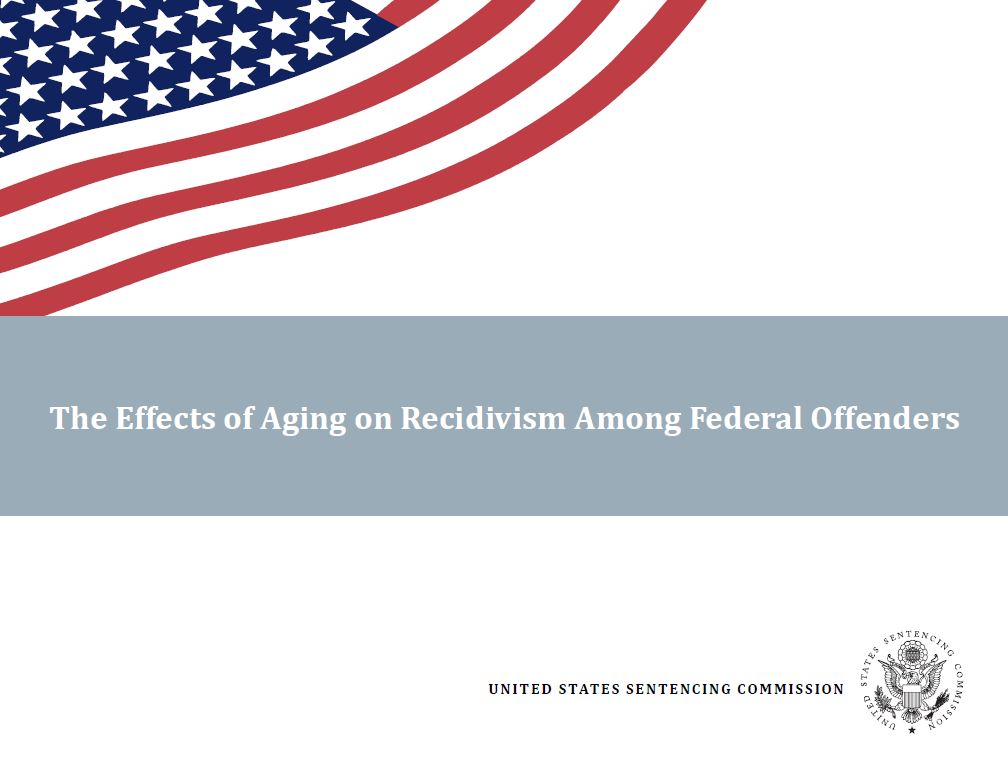Report Summary

Report Highlights
- Older offenders were substantially less likely than younger offenders to recidivate following release. Over an eight-year follow-up period, 13.4 percent of offenders age 65 or older at the time of release were rearrested compared to 67.6 percent of offenders younger than age 21 at the time of release. The pattern was consistent across age groupings, and recidivism measured by rearrest, reconviction, and reincarceration declined as age increased.
- For federal offenders under age 30 at the time of release, over one-fourth (26.6%) who recidivated had assault as their most common new charge. By comparison, for offenders 60 years old or older at the time of release, almost one quarter (23.7%) who recidivated had a public order offense6 as their most serious new charge.
- Age and criminal history exerted a strong influence on recidivism. For offenders in Criminal History Category I, the rearrest rate ranged from 53.0 percent for offenders younger than age 30 at the time of release to 11.3 percent for offenders age 60 or older. For offenders in Criminal History Category VI, the rearrest rate ranged from 89.7 percent for offenders younger than age 30 at the time of release to 37.7 percent for offenders age 60 or older.
- Education level influenced recidivism across almost all categories. For example, among offenders under age 30 at the time of release, college graduates had a substantially lower rearrest rate (27.0%) than offenders who did not complete high school (74.4%). Similarly, among offenders age 60 or older at the time of release, college graduates had a somewhat lower rearrest rate (11.6%) than offenders who did not complete high school (17.2%).
- Age exerted a strong influence on recidivism across all sentence length categories. Older offenders were less likely to recidivate after release than younger offenders who had served similar sentences, regardless of the length of sentence imposed. In addition, for younger offenders there was some association between the length of the original federal sentence and the rearrest rates, as younger offenders with sentences of up to six months generally had lower rearrest rates than younger offenders with longer sentences. However, among all offenders sentenced to one year or more of imprisonment, there was no clear association between the length of sentence and the rearrest rate.
- For certain major offense types, the type of federal offense that offenders had committed also had an effect on recidivism across age groups. For example, firearms offenders had a substantially higher rearrest rate across all age categories than drug trafficking offenders, who in turn had a higher rearrest rate across all age categories than fraud offenders. For example, for offenders under age 30 at the time of release, the rearrest rates were 79.3 percent (firearms), 62.5 percent (drug trafficking), and 53.6 percent (fraud). Similarly, for offenders age 60 and older at the time of release, the rearrest rates were 30.2 percent (firearms), 17.5 percent (drug trafficking), and 12.5 percent (fraud).
- At every age group, federal prisoners had a substantially lower recidivism rate than state prisoners who also were released in 2005 and tracked by the Bureau of Justice Statistics. For example, for offenders age 24 or younger at the time of release, 63.2 percent of federal prisoners were rearrested within five years compared to over four-fifths (84.1%) of state prisoners. Like federal prisoners, older state prisoners were less likely to recidivate than younger state prisoners.
